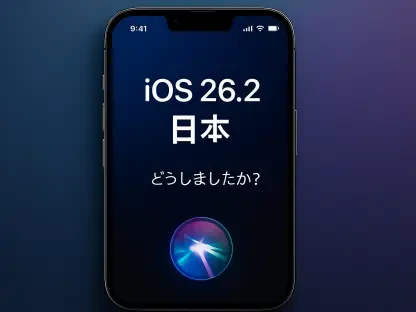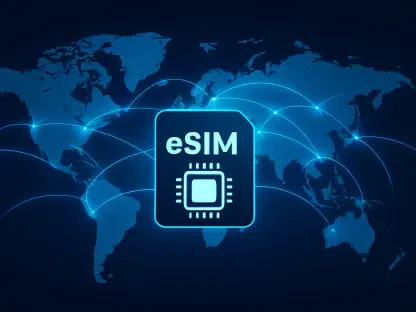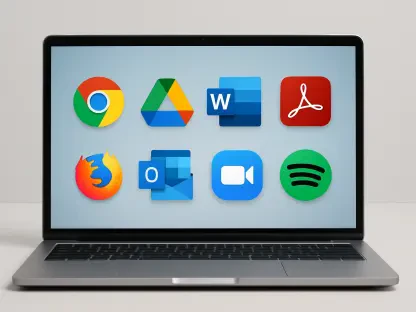The mobile value-added services (VAS) market is on the brink of a significant transformation, with projections indicating substantial growth and emerging trends that will redefine the sector. From enhanced mobile penetration to the proliferation of mobile apps, the market is set to experience a dynamic shift. This article delves into the key factors driving this evolution, the major players involved, and the trends that will shape the future of mobile VAS.
Projected Market Growth
Rising Market Value and CAGR
The mobile VAS market is expected to witness a remarkable increase in value, rising from $960.55 billion in 2024 to $1066.12 billion in 2025. This growth trajectory is anticipated to continue, with a compound annual growth rate (CAGR) of 11.0%. By 2029, the market is projected to reach $1892.29 billion, reflecting a heightened CAGR of 15.4%. This robust growth is driven by several factors, including the surge of IoT and connected devices, the advent of edge computing, and the rapid expansion of mobile e-commerce. The convergence of these technological advancements underscores the increasing dependence on mobile services across various sectors.
Mobile VAS plays a critical role in enhancing user experience, providing additional functionalities beyond basic voice and text services. As more devices become interconnected and data transmission speeds improve, the opportunity for richer and more interactive services expands. The demand for innovative and integrated solutions is pushing companies to invest in cutting-edge technology to stay competitive. The escalation in mobile data consumption, coupled with the proliferation of mobile apps, further propels the adoption of value-added services, ensuring sustained market growth well into the next decade.
Key Market Drivers
The increasing global smartphone user base is a significant driver of the mobile VAS market. Enhanced internet penetration, rising income levels, and expanding social media engagement have contributed to the growing demand for smartphones. The COVID-19 pandemic further accelerated this demand, as prolonged home confinements and remote work setups bolstered smartphone usage. As the number of smartphone users continues to climb, the demand for mobile value-added services follows suit, providing essential features such as messaging, communication, entertainment, and e-commerce.
Additionally, the affordability of smartphones and data plans has broadened access to mobile VAS, even in previously underserved markets. As emerging economies witness a rise in digital literacy and infrastructure development, the adoption of smartphone technology becomes more widespread. These regions are becoming hotspots for market growth, with consumers looking for seamless and enhanced mobile experiences. Enterprises are also capitalizing on this trend by offering bespoke services tailored to local preferences, further driving the demand for mobile VAS. The rising emphasis on digital transformation across industries fuels the need for mobile solutions that support remote operations and enhanced connectivity.
Emerging Trends in Mobile VAS
Adoption of 5G Technology
One of the most significant trends shaping the mobile VAS market is the widespread adoption of 5G technology. This next-generation network promises to revolutionize various sectors through augmented reality (AR) and virtual reality (VR). The enhanced speed and connectivity offered by 5G will enable more immersive and interactive experiences, transforming how users engage with mobile services. The improved latency and bandwidth capacities pave the way for innovative applications, from virtual meetings to real-time gaming and remote surgeries.
The implementation of 5G is not just a technological upgrade; it is a catalyst for new business models and services. Industries such as healthcare, education, entertainment, and retail stand to benefit immensely from 5G-enabled mobile VAS. For instance, telemedicine can offer more reliable and high-definition consultations, while remote learning platforms can facilitate interactive and engaging content. The low-latency environment of 5G is expected to enhance mobile gaming experiences, making them more dynamic and responsive. Consequently, consumers will demand more data-intensive services, prompting providers to develop and deploy new value-added solutions.
Advancements in Mobile Health and Wellness
Mobile health and wellness services are set to experience significant advancements, driven by the increasing demand for remote healthcare solutions. The integration of mobile health (mHealth) services into the VAS market will provide users with convenient access to medical consultations, health monitoring, and wellness programs. This trend is expected to play a crucial role in improving healthcare accessibility and outcomes. Technological innovations such as wearables and AI-driven health apps will allow individuals to manage their health proactively and transparently.
Healthcare providers are increasingly adopting mHealth solutions to bridge the gap between patients and medical professionals. Remote patient monitoring tools and virtual consultations have become mainstream, particularly in areas with limited healthcare infrastructure. mHealth apps offer personalized health management plans, medication reminders, and access to a pool of medical resources. The widespread use of these applications is not only transforming traditional healthcare delivery but also fostering a preventive approach to health management. As a result, the mHealth segment within mobile VAS is poised for exponential growth, driven by both consumer adoption and advancements in medical technology.
Major Players in the Market
Leading Companies and Their Innovations
Several major companies are at the forefront of the mobile VAS market, including Apple Inc., OnMobile Global Limited, Google LLC, AT&T Inc., Vodafone Idea Limited, and Verizon Communications Inc. These industry giants are focusing on delivering innovative solutions, particularly in the realm of mobile payments. Mobile payment services, featuring digital wallets, contactless payments, and mobile banking apps, are gaining popularity due to their ability to facilitate secure and convenient financial transactions via mobile devices.
The move toward a cashless economy is significantly influencing the adoption of mobile payment solutions. Industry leaders are leveraging their technological prowess to provide seamless and secure financial services. These innovations encompass a wide range of payment methods, including peer-to-peer transactions, bill payments, and international money transfers. Such versatility not only enhances user convenience but also instills confidence in digital financial solutions. The convergence of mobile payments with other digital services, like shopping and entertainment, integrates financial transactions into everyday activities, making them more accessible and efficient.
Strategic Positioning and Market Influence
These leading firms are strategically positioning themselves to capitalize on the growing demand for mobile VAS. By offering cutting-edge services and leveraging their technological expertise, they are shaping the market landscape and driving the adoption of mobile value-added services across various sectors. Their influence is evident in the increasing integration of VAS into daily activities, encompassing communication, entertainment, health, and financial management.
These companies are also investing heavily in research and development to stay ahead of industry trends and anticipate consumer needs. Collaborations and partnerships with technology startups and other industries are becoming prevalent, fostering an ecosystem that promotes innovation and sustainability. By creating user-centric solutions and enhancing service delivery, these market leaders are setting benchmarks for quality and reliability in mobile VAS. Their continuous efforts to address evolving market demands ensure their pivotal role in steering the future trajectory of the mobile VAS industry.
Market Segmentation and Service Solutions
Diverse Array of Service Solutions
The mobile VAS market is segmented into a diverse array of service solutions, stores, and end-users. By solution, the market encompasses mobile advertising, location-based services, mobile infotainment, mobile email and instant messaging, SMS, multimedia messaging, mobile money, and various other services. This segmentation ensures that VAS cater to a wide range of user needs and preferences, spanning advertising, communication, entertainment, and financial transactions. Each segment addresses specific consumer and enterprise requirements, fostering a multifaceted market landscape.
Mobile advertising includes in-app ads, mobile search ads, SMS and MMS ads, and mobile video advertising, catering to the evolving digital marketing strategies of businesses. Location-based services (LBS) involve navigation and mapping, geofencing, and location-based promotions, providing users with personalized and contextually relevant information. Mobile infotainment covers a vast array of services such as mobile gaming, video and music streaming, news, and social media applications. Mobile email and instant messaging solutions offer secure and efficient communication channels, essential for both personal and professional use. The expansive variety within these segments indicates the comprehensive nature of mobile VAS and their integral role in today’s digital ecosystem.
Store and End-User Segmentation
The store segment is divided between Google Play, App Store (iOS), and other platforms, while end-users range from individual consumers to enterprise entities. This segmentation highlights the broad appeal and integration of mobile VAS across different user groups, ensuring that services are tailored to meet the specific needs of each segment. The diversity within store segmentation ensures that users across various operating systems and device preferences can access mobile VAS, driving wider adoption and market penetration.
Individual consumers benefit from these services by enhancing their everyday experiences, from communication and entertainment to shopping and health management. Enterprises utilize mobile VAS to streamline operations, improve employee productivity, and engage with customers more effectively. Tailoring services to meet the unique needs of different user groups necessitates continuous innovation and adaptability from providers. This segmentation strategy not only enhances user satisfaction but also expands the market reach, making mobile VAS indispensable across various demographics and industry verticals.
Regional Insights and Growth Potential
North America’s Dominance
Geographically, North America emerged as the largest region within the mobile VAS market in 2024 and is poised to maintain this lead, becoming the fastest-growing region during the forecast period. This regional dominance is indicative of the high mobile penetration rates, technological advancements, and consumer readiness to adopt and integrate VAS into daily activities. The advanced infrastructure and favorable regulatory environment in North America further foster the growth and development of mobile VAS, ensuring regional market leadership.
North America’s thriving tech ecosystem, coupled with robust research and development capabilities, positions it as a hub for innovation in mobile VAS. The region’s consumer base is marked by high levels of digital literacy and a propensity for early adoption of new technologies. This cultural affinity towards innovation drives the demand for advanced mobile services, from high-speed connectivity offered by 5G to immersive experiences in AR and VR. The synergy between technology providers, regulatory bodies, and consumers creates a conducive environment for sustained growth and advancement in the mobile VAS sector.
Potential for Significant Growth
The mobile value-added services (VAS) market is on the cusp of a major transformation, with projections pointing to significant growth and emerging trends poised to redefine the sector. Enhanced mobile penetration and the proliferation of mobile apps will lead to a dynamic shift in the market. This article explores the key drivers behind this evolution, the major industry players, and the trends that will shape the future of mobile VAS. Notably, more consumers worldwide are gaining access to mobile devices, leading to a broader demand for customized services such as entertainment, information, and transactional features offered through mobile platforms. Major telecommunications companies are increasingly focusing on providing unique VAS to attract and retain customers. Additionally, trends like the expansion of 5G networks, the rise of mobile payments, and innovations in artificial intelligence will significantly influence the future landscape of VAS. This sector is expected to see innovative, user-centric developments that cater to a diverse range of needs and preferences, signaling an exciting future for mobile VAS.









